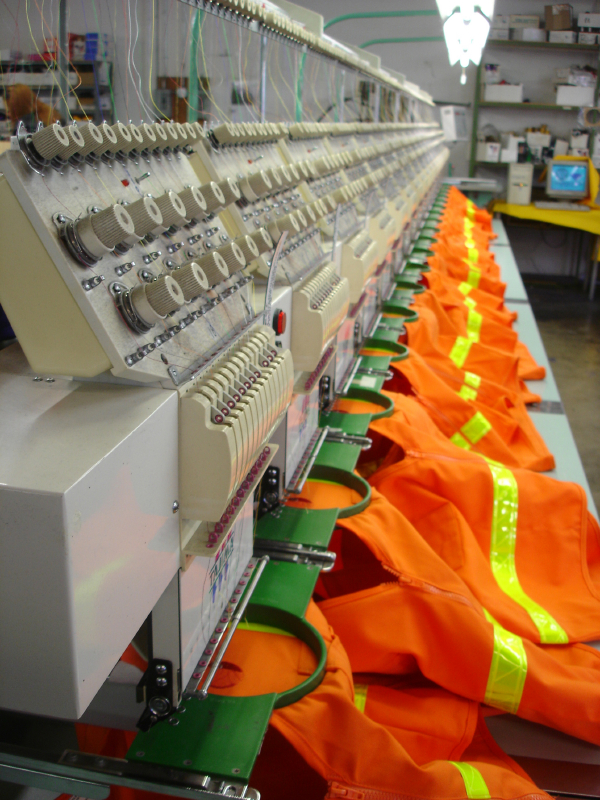Embroidered Bags
Using embroidery to decorate bags with your logo or branding is a beautiful and durable method, and our embroidered bags online are no different. Embroidery is a method of personalisation that utilises coloured threads. These coloured threads are stitched strategically within an area to create an image (in our instance, a logo). Embroidery is easily the oldest way when it came to decoration. In the past, embroidery was done by hand. In fact, it has been noted that using embroidery to decorate is as old as sewing.

Modern Embroidery Techniques
Today, we no longer embroider by hand using thread into fabric. Instead, we use a special computer software program which converts your logo into a format that a computer will understand and decipher. Once we enter your logo into the computer, known as digitisation, we can then begin the process of embroidery. A computer is connected to a special machine that resembles a sewing machine. The different coloured thread is then fed through this machine and using needles, thousands of threads are inserted into the designated branding area. Once completed, the result is an amazing accurate branding of your logo using thread.


Why Use Embroidery to Brand Bags?
Using embroidery to brand onto bags has several advantages:


- Embroidery is rather pretty. This ancient method of branding has meant that everyone would have seen or knows what embroidery is. This sense of familiarity is fantastic, because when people see embroidery they immediately have affection to the branding result.
- Quite durable. If embroidery is done correctly, it is one of the most durable ways to brand onto a bag. In fact, the branding is durable even to everyday washing too.
- Enables colour to be branded. Using different coloured thread, it is possible to brand your logo in colour. (Although there are limitations of course, which means a photo finish will never be possible)
When Not to Use Embroidery on Bags?
Despite the advantages of using embroidery, it is definitely not perfect for all situations. There are many instances when embroidery is not appropriate compared to other ways to brand a bag, such as screen printing or digital transfer printing. Some of the instances where embroidery should not be used include:
- When you need a large surface to brand your logo onto a bag. Embroidery works well on smaller areas. Large areas tend to be very expensive, or in some instances, simply not possible. If you want your branding to be larger than 15 cm, it is often cheaper to brand using screen printing.
- Surface fabric. Embroidery works well with bags that are made from cotton, polyester or nylon (although this may not always be the case). Embroidery may not work on imitation leather or leather. Certain bag surfaces made from felt may also not work. Using embroidery on these surfaces can damage both the needles on the embroidery machine, as well as damage the bag itself.
Modern Embroidery Advances
As computers become more powerful and branding techniques using embroidery improve over time, we have developed new techniques to embroider including:


- 3 Dimensional Embroidery. This is when the stitch count is so intense that the logo being personalised actually gets raised from the surface of the print area. The result is a 3 dimensional decoration of your logo onto a bag.
- Embroidered Patches. It is now possible to embroider your graphics and logos onto an iron on patch. This branding method has a whole different aesthetic look about it and is a very appealing alternate way to decorate bags. After the patch is created, we can heat apply the patch onto the bag surface.
History
Embroidery Trivia: Did you know in 1964, archaeologists in Russia found fossils with evidence of embroidery as far back as 30,000BC on an ancient hunter. Embroidery evidence from ancient civilisations has long been found from the Egyptians, the Chinese, Indians, Russians and the English. Each civilisation has its own method, technique and artistry in embroidery. Looking at the different types of embroidery from different cultures is a journey in itself through history, religion and art.